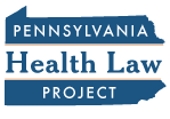CMS Proposes Changes in Terms of Medicare, Medicaid Provider Participation
The Centers for Medicare & Medicaid Services has proposed changes in the terms under which hospitals may participate in Medicare and Medicaid.
Among those changes, hospitals must:
 establish an infection prevention and control program with qualified leaders
establish an infection prevention and control program with qualified leaders- establish an antibiotic stewardship program with qualified leaders
- establish policies prohibiting discrimination based on race, color, religion, national origin, general, sexual orientation, age, and disability
- incorporate readmission and hospital-acquired conditions information into their Quality Assessment and Performance Improvement program
- improve their medical record-keeping and provide for patient access to those records
Learn more what CMS has proposed and why it has proposed it in this CMS news release and this CMS fact sheet. CMS is accepting comments about the proposed changes until August 15. Find a link to the proposed rule itself here.
 In addition, MACPAC looks at the more than 100 different tools used at the state level to assess the functional capabilities of individuals who may be eligible for Medicaid-funded long-term services and supports.
In addition, MACPAC looks at the more than 100 different tools used at the state level to assess the functional capabilities of individuals who may be eligible for Medicaid-funded long-term services and supports. More than two million Medicare patients were hospitalized under observation status in 2014.
More than two million Medicare patients were hospitalized under observation status in 2014. In SNAP’s view, maintaining vital Medicaid funding is critical to ensuring that hospitals in general, and safety-net hospitals in particular, can deliver quality health care services to the state’s growing Medicaid population while also investing in innovative ways to improve the quality and efficiency of health care for all Pennsylvanians.
In SNAP’s view, maintaining vital Medicaid funding is critical to ensuring that hospitals in general, and safety-net hospitals in particular, can deliver quality health care services to the state’s growing Medicaid population while also investing in innovative ways to improve the quality and efficiency of health care for all Pennsylvanians. This conclusion is drawn in a new study from the Georgetown University Health Policy Institute based on interviews with leaders of eleven hospital systems and federally qualified health centers (FQHCs) in seven states: four that expanded their Medicaid programs and three that did not.
This conclusion is drawn in a new study from the Georgetown University Health Policy Institute based on interviews with leaders of eleven hospital systems and federally qualified health centers (FQHCs) in seven states: four that expanded their Medicaid programs and three that did not.
 Included in this edition are articles about a new federal managed care regulation and federal policy governing balance billing of dual-eligible (Medicare- and Medicaid-covered) individuals. The newsletter also takes a look at Pennsylvania one year after the state expanded its Medicaid program and offers an update on Community HealthChoices, the new program of managed long-term services and supports the state intends to implement.
Included in this edition are articles about a new federal managed care regulation and federal policy governing balance billing of dual-eligible (Medicare- and Medicaid-covered) individuals. The newsletter also takes a look at Pennsylvania one year after the state expanded its Medicaid program and offers an update on Community HealthChoices, the new program of managed long-term services and supports the state intends to implement. The program was scheduled to begin in southwestern Pennsylvania on January 1, 2017 but state officials recently announced that they have pushed back the start date to July 1, 2017.
The program was scheduled to begin in southwestern Pennsylvania on January 1, 2017 but state officials recently announced that they have pushed back the start date to July 1, 2017. Current guidelines are evolving both in the state and nationally, with medical authorities and federal regulators weighing in with their views. Recently, an advisory committee to the Pennsylvania Department of Human Services offered its own recommendations for criteria for prescribing the most expensive drugs.
Current guidelines are evolving both in the state and nationally, with medical authorities and federal regulators weighing in with their views. Recently, an advisory committee to the Pennsylvania Department of Human Services offered its own recommendations for criteria for prescribing the most expensive drugs.